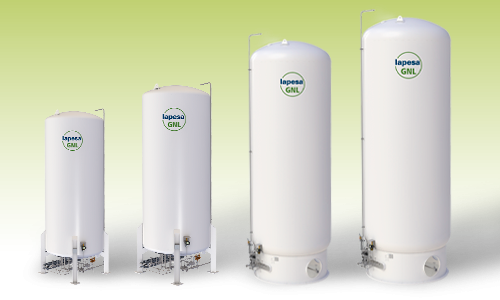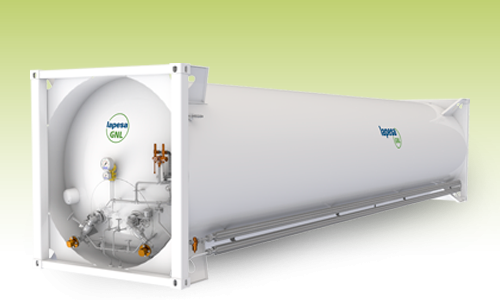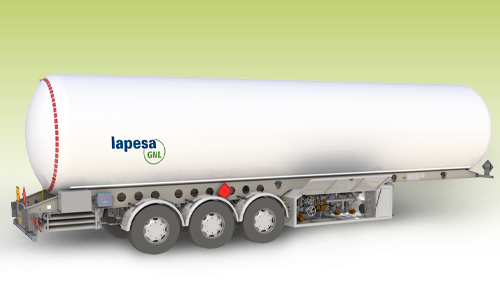LNG TANKS AND EQUIPMENT
Engineering, development and manufacture of tanks for the storage of liquefied natural gas LNG and other liquefied gases at cryogenic pressure and temperature.
Our technical team for the development and manufacture of tanks for the storage of liquefied natural gas (LNG) and other cryogenic storage gases, collaborates closely with our clients in the design and definition of the products before their manufacture and supply, adapting them to the needs of the project. Our main clients include the most important multinational energy companies, the most prestigious engineering companies and the best professionals in the sector in all international markets, who have Lapesa products for all types of projects related to LNG.

STATIC TANKS FOR LNG STORAGE
Horizontal tanks • Vertical tanks
Static tanks for LNG storage in horizontal or vertical installation up to 320 m3 capacity, according to European Directive 2014/68/CE and with CE marking. Upon request, according to ASME VIII div.1 and with ASME marking, or adapted to the regulatory requirements and specific requirements of the place or country of destination.

TANKS FOR VNG SERVICE STATIONS
Tanks for storage and supply of vehicular natural gas (VNG) in service stations, compressed natural gas (CNG), as liquefied natural gas (LNG) or both at the same time. Vertical tanks with capacities, design pressure and P&ID adapted to each specific need or project.

TRANSPORTATION AND SERVICE
ISO-containers • Semi-trailer tankers
ISO-containers and semi-trailer tankers, for the transport and service of LNG (UN 1972), ethane (UN 1961), ethylene (UN 1038) or nitrogen (UN 1977), manufactured under applicable European standards and Directives. Volumetric capacity for transport tanks and composition of the transfer equipment, adapted to the specific requirements of the client.
Information LNG
Frequently Asked Questions (FAQs)
Storage tanks and Equipment for Air Gases
Engineering, development, and manufacturing of air gases storage tanks
We adapt to the needs and projects of each client

LIQUEFIED AIR GASES STORAGE TANKS

CO2 STORAGE TANKS

COMPRESSED AIR GASES STORAGE TANKS






